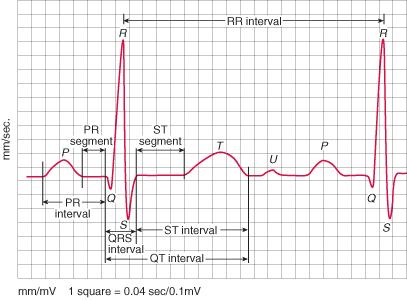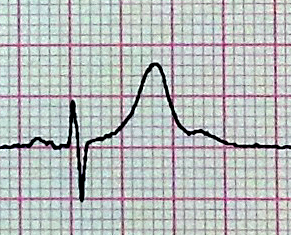The U Wave

|
WikiDoc Resources for The U Wave |
|
Articles |
|---|
|
Most recent articles on The U Wave |
|
Media |
|
Evidence Based Medicine |
|
Clinical Trials |
|
Ongoing Trials on The U Wave at Clinical Trials.gov Clinical Trials on The U Wave at Google
|
|
Guidelines / Policies / Govt |
|
US National Guidelines Clearinghouse on The U Wave
|
|
Books |
|
News |
|
Commentary |
|
Definitions |
|
Patient Resources / Community |
|
Patient resources on The U Wave Discussion groups on The U Wave Patient Handouts on The U Wave Directions to Hospitals Treating The U Wave Risk calculators and risk factors for The U Wave
|
|
Healthcare Provider Resources |
|
Causes & Risk Factors for The U Wave |
|
Continuing Medical Education (CME) |
|
International |
|
|
|
Business |
|
Experimental / Informatics |
Editor-In-Chief: C. Michael Gibson, M.S., M.D. [1]
Associate Editor-In-Chief: Cafer Zorkun, M.D., Ph.D. [2]
Overview
U waves were described by Einthoven in 1903 and normally have same polarity as T waves[1]
Pathophysiology
There are three hypotheses regarding the origin of the U wave[2]:
- Late repolarization of Purkinje fibers,
- Late repolarization of some other portions of left ventricle,
- Alteration in the normal action potential shape by after potentials.
Appearance
- Ordinarily the U wave has the same polarity as the T wave and is 5 to 25% of the T wave amplitude.
- Tallest in leads V2 and V3, usually not greater than 1.0 mm.
- Considered abnormally large if the U wave is greater than 1.5 mm in any lead.[3]
Causes of Abnormal U wave Prominence
- Bradycardia
- CNS disease
- Drugs such as:
- Electrolyte imbalance
Causes of U Wave Inversion
- Left ventricular hypertrophy (in I, V5, V6)
- Right ventricular hypertrophy (in II, III)
- Ischemic heart disease
- May occur during anginal episode
- U wave inversion during an exercise tolerance test is considered indicative of ischemia by some
References
- ↑ Einthoven W. Die galvanometrische registrierung des menschlichen Electrokardiogram. Pfluger’s Arch 1903;99:472-480.
- ↑ Bernardo DD, Murray A. Origin on the electrocardiogram of U-waves and abnormal U-wave inversion. Cardiovasc Res 2002;53:202-208
- ↑ Chou's Electrocardiography in Clinical Practice. Third Edition, pp. 519-522.
Additional resources
- ECGpedia: Course for interpretation of ECG
- The whole ECG - A basic ECG primer
- 12-lead ECG library
- Simulation tool to demonstrate and study the relation between the electric activity of the heart and the ECG
- ECG information from Children's Hospital Heart Center, Seattle
- ECG Challenge from the ACC D2B Initiative
- National Heart, Lung, and Blood Institute, Diseases and Conditions Index
- A history of electrocardiography
- EKG Interpretations in infants and children
